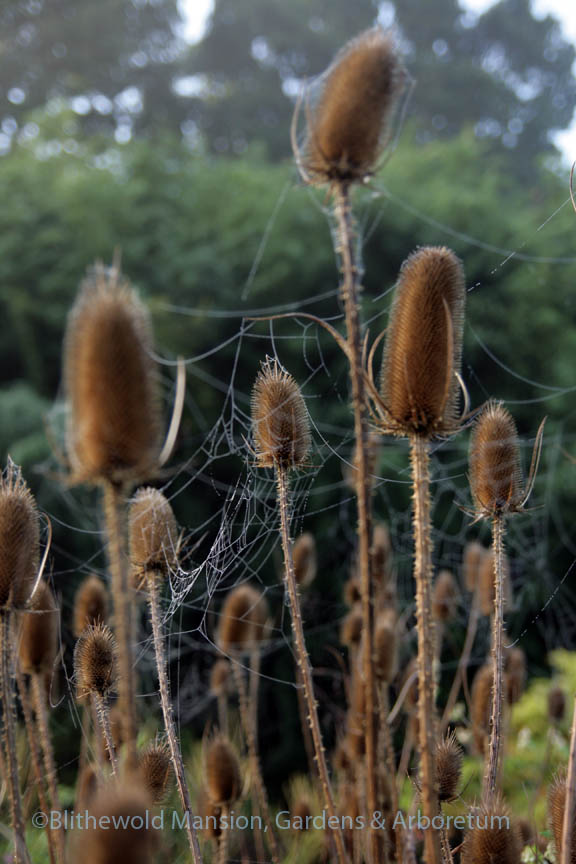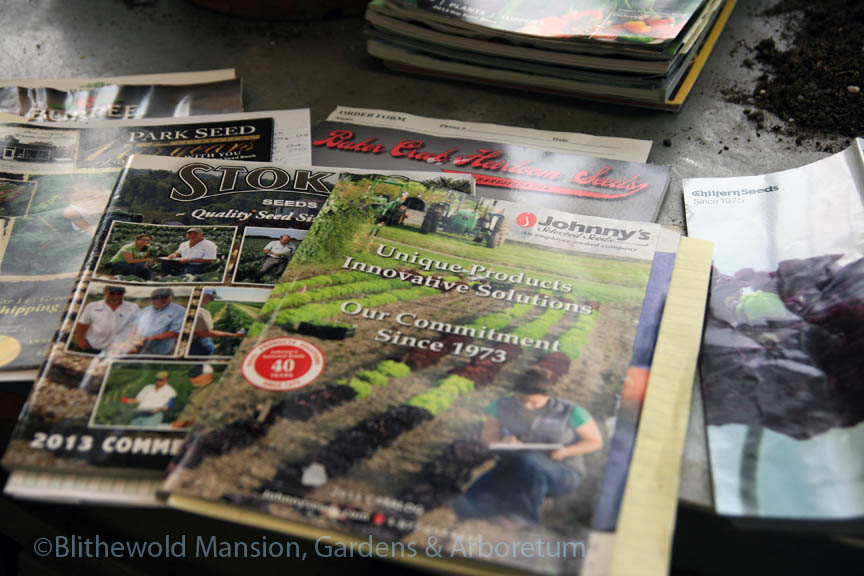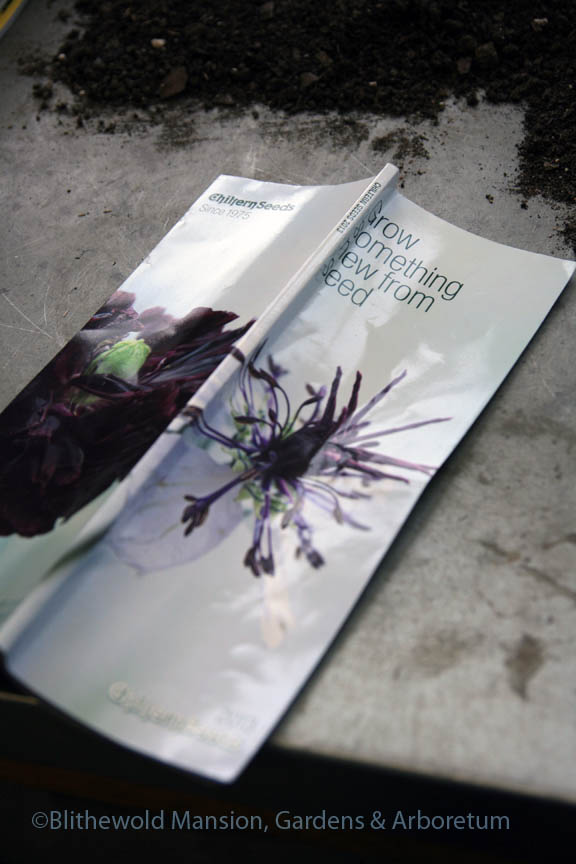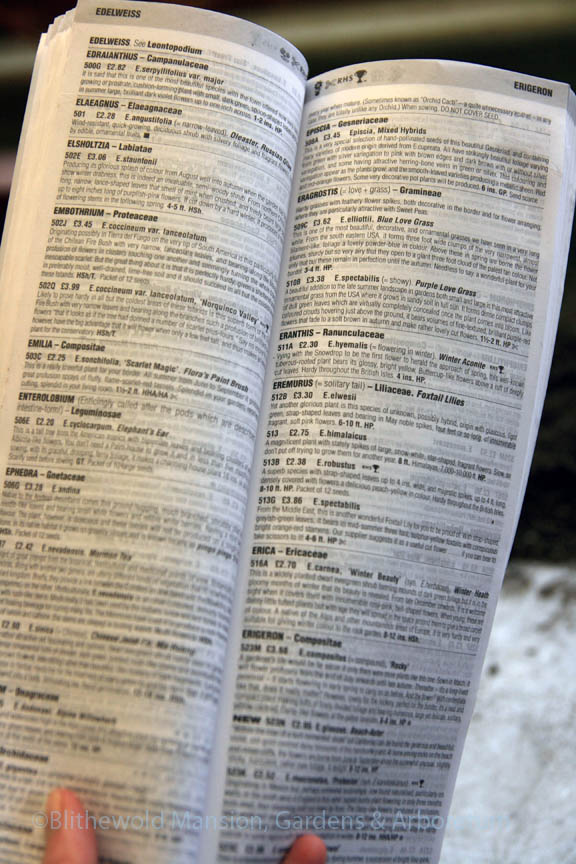A good read
More changes are afoot in the potting shed than just a remodel and reorganization. We are entering the modern age finally and ordering seeds on line rather than sending them off by mail. But even though we’ve decided to embrace technology for the sake of faster gratification than waiting for checks to be issued and the mail sent both ways, I still think reading a paper catalog is easier and more fun than staring at web pages. –That said, I can understand why some plant and seed companies have gone entirely on line and I applaud them for not wasting trees, ink, and postage on me when clearly the world is moving away from those things. So for however long it takes for the rest of us to prefer the feeling of an e-reader in our paws rather than a bound book, paper catalogs will have a welcome place on my lap.
Last year I placed our first order (in my time) with Chiltern Seeds in England. I searched on line for what we wanted — certain grasses and sweet peas that weren’t available through our usual sources — and was only mildly annoyed when some of their plants were listed without pictures. After all, a google images search is only a tab away. But this year they sent us a paper catalog. At first I was overwhelmed by it because the skinny onion-skin pages hold 4000+ plant descriptions, all but 9 without pictures! But after flicking through quickly, I started reading from the beginning and found the reward: tucked here and there amongst perfectly illustrative descriptions is humor, personality, and interesting information.
 I learned that Dispsacus fullonum, which I have been calling Fuller’s teasel (because that’s what its species name implies) is in fact “common teasel”. The teasel actually used by fullers to card wool is Dipsacus sativus, whose dried flower heads “are a miracle of nature” with ” hundreds of tiny, stiff, downward-turned hooks amazingly and geometrically arranged.” The description of Eryngium planum ‘Blue Glitter’ made me nod and snort because “the writer likes this one!” and after calling the flower heads “innumerable,” he actually counted 85 on the stem on his desk. I never noticed before that Silphium lacinatum orients its leaves to the poles. (I also didn’t know it’s called compass plant, pilot weed, and polar plant.) So cool. And I loved that towards the end the writer looked like he was getting a little punchy. The description for Viola ‘Cats’ begins,
I learned that Dispsacus fullonum, which I have been calling Fuller’s teasel (because that’s what its species name implies) is in fact “common teasel”. The teasel actually used by fullers to card wool is Dipsacus sativus, whose dried flower heads “are a miracle of nature” with ” hundreds of tiny, stiff, downward-turned hooks amazingly and geometrically arranged.” The description of Eryngium planum ‘Blue Glitter’ made me nod and snort because “the writer likes this one!” and after calling the flower heads “innumerable,” he actually counted 85 on the stem on his desk. I never noticed before that Silphium lacinatum orients its leaves to the poles. (I also didn’t know it’s called compass plant, pilot weed, and polar plant.) So cool. And I loved that towards the end the writer looked like he was getting a little punchy. The description for Viola ‘Cats’ begins,
“It is no secret that the writer likes his cats: as he pens these words, there’s a white porcelain cat glowering down at him from the mantlepiece warning him against making purrfectly awful puns about purrfect faces or even suggesting having a purr of these lovely Pansies in pots outside your front door. So he won’t!”
Like turning the last page of a good book, I was a little sad to finish that catalog. But we placed a big order and have a whole season of our own opinions about those plants – mostly sweet peas and primroses – to look forward to.
Do you still read plant and seed catalogs cover to cover? Do you have a favorite?



